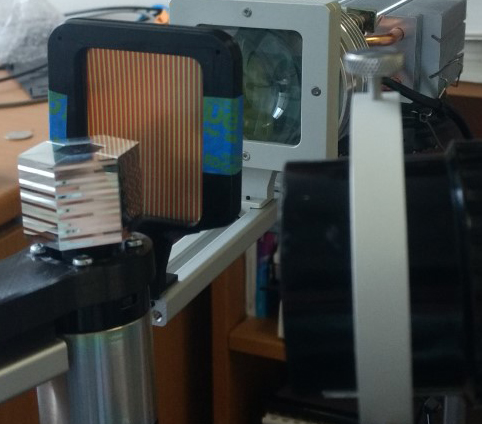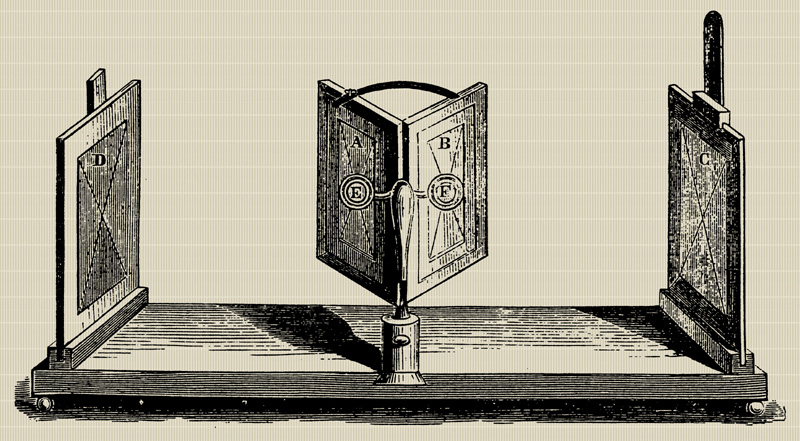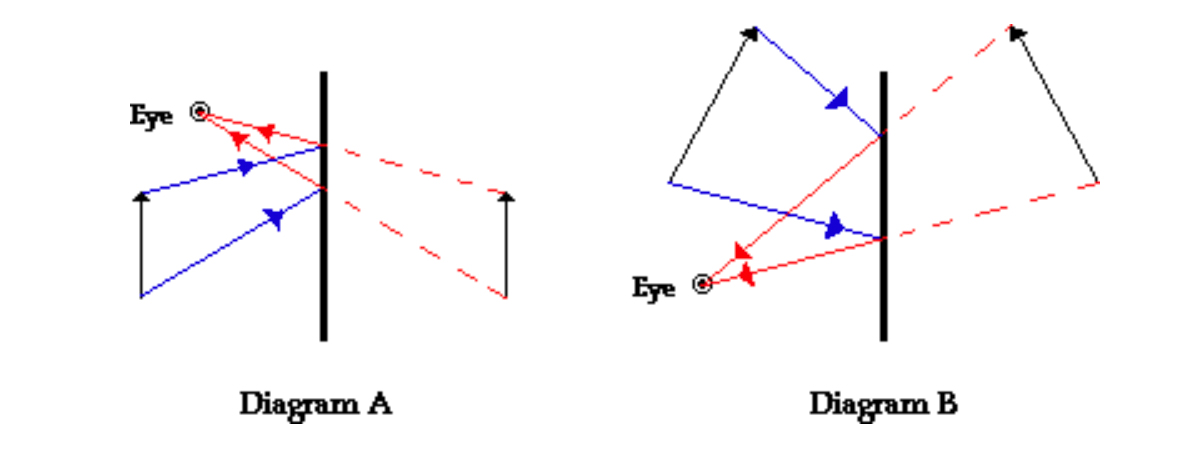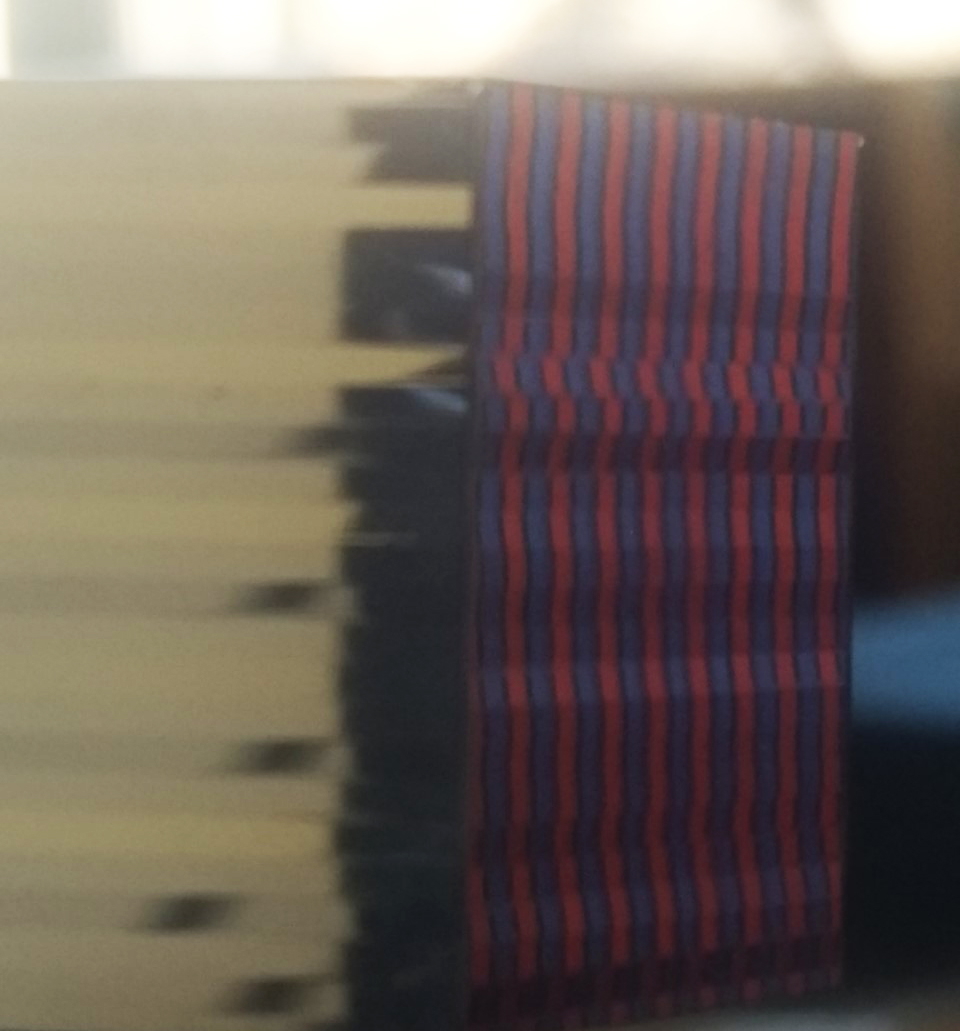
In an earlier blog post I wrote about how my gaze had zoomed in to accommodate the nano-scale of the lathe and how I adapted my ‘visual thinking’ to a Cartesian reference system of x, y and z axes. Over the past week I have zoomed back out again, reflecting on how my project with Geoff relates to the bigger picture of interweaving art and science. So far, our project has been focused on technical elements: learning the nano-lathe, cutting the components, figuring out the lenses and how to make them, rotational speed and motor electronics. What has also come into play is how the rotational speed of the image frames interacts with human perception to generate the illusion of movement.
The desire to create perceptual illusions appears incongruous with the work of the physicists who surround me – applying their objective/empirical research of nano-scale optics to ‘real’ contexts such as computing and advanced scientific instrumentation. Making work in a scientific environment has led me to think about how different terms have different meanings/understanding across disciplines. The process of cross-disciplinary exploration has also expanded my understanding of how things function and are perceived in the world – two very different concepts, which have been combined and exploited by both natural magicians and artists for centuries.
It’s interesting that ever since the 17th century we have increasingly relied on the scientific apparatus or measuring devices as observational tools (rather than the human observer) for understanding physical phenomena. During the time of the natural magician and preternatural philosopher Giovanni Batista Della Porta (see my first blog post), an observer paying close attention (possibly with the aid of a magnifying lens) was still considered a reliable method of studying natural phenomena. In the wake of the perceptual scepticism[1] that developed during the 18th and 19th centuries, the human perceptual system, deemed too fallible, was eclipsed by the scientific apparatus. As art historian Barbara Stafford writes, “spatial and kinesthetic intelligence… [was] radically divorced from… logical mathematical aptitude”.[2] During this project I have found myself constantly oscillating between the ‘logical mathematics’ of the mirror facets and lenses (ray diagrams, law of refraction, python and gcode) and my ability to perceive illusionary movement in the projected images. And even with the ‘mathematically’ cut components using the precision of the nano-lathe, it is still by trial and error where I physically place the components in the overall optical system. I need my senses as well as mathematics to understand if the experimentation is working or not.

I noticed different understandings across across art and science through my exploration of virtual images. In a visual art context, we normally understand a virtual image as something that exists through the combination of the viewer’s perceptual system and a technological apparatus. I think of the 3D images generated through Charles Wheatstone’s 19th century stereoscope or the constructed 3D world presented for a contemporary viewer wearing VR goggles.

Cultural historian Amanda Schubert defines her understanding of a virtual image by using the example of the stereoscope. She writes:
The image of depth and relief that the spectator sees when she looks through the stereoscope does not exist in the apparatus itself, nor in the two-dimensional stereograph. Rather, it exists in her perception while she is looking through the stereoscope at the stereograph. Unlike a photographic image, which has material existence as a chemical reaction preserved on sensitised paper, a virtual image like that seen through the stereoscope is irreducible to its material components.[3]
Our project explores the virtual image in a similar way, where the movement of the image and its depth of field) depend on both the technical apparatus (nano-lathe cut facets, rotating polygon and lens system) and the viewer’s perception.

In the world of Physics, a virtual image is something completely different. It is an image that is formed where light does not actually reach. An example of this is an image reflected on a plane mirror. The reflected image appears to the observer to be behind the mirror plane, that is, not sitting on the mirror’s surface but at a distance away from it. Light however does not actually pass through the location on the other side of the mirror, it only appears to the observer that light (the image) is coming from this location. Although I have never seen it stated in ray optics textbooks (I’ve been trawling through historical and contemporary volumes during my residency!), I would describe this phenomenon as a sensory illusion. I’ve learned that although the optical ray diagrams include the human eye, they focus more on the rays of light and not the whole perceptual system of the viewer.
Clearly, our project also involves this type of virtual image. We are using plane mirrors cut on the nano-lathe to construct the polygon. By cutting different depths into the mirror plane, we are exploiting the virtuality of the image, creating the illusion that the image is emerging from different locations behind the mirror, thereby changing/manipulating the reflected image.

Staying within the world of Physics, a projected image on the other hand is termed a ‘real image’ because with a projected image the light passes through the actual image location, (which for our project, it is the screen or the wall). Contrastingly in the context visual art, a projected image is sometimes termed ‘virtual’ because it is not ‘real’ relative to other material forms of images such as a photograph.
It’s been interesting to discover that I’m working with different disciplinary understandings of virtual and real images and that the combination of how materiality and light work together with human perception and experience, allows me to explore a combination of what is real, virtual and illusionary. It’s becoming clearer how blurry the disciplinary lines of this project are! With our project, one cannot separate fact from fiction, the real from the virtual or even materiality from perception. It is an entanglement of traditional optics, fictional aesthetics, innovative application of digital (nano-) fabrication and visual perception.
[1] Barbara Maria Stafford, (1994) Artful science: enlightenment, entertainment, and the eclipse of visual education, Cambridge, Mass: MIT Press, p8.
[2] Stafford, p8.
[3] Amanda Shubert, (2019). Virtual realism: Victorian fiction as optical technology (No. 13865135). Retrieved from ProQuest One Academic https://search-proquest-com.virtual.anu.edu.au/docview/2273838219?accountid=8330.